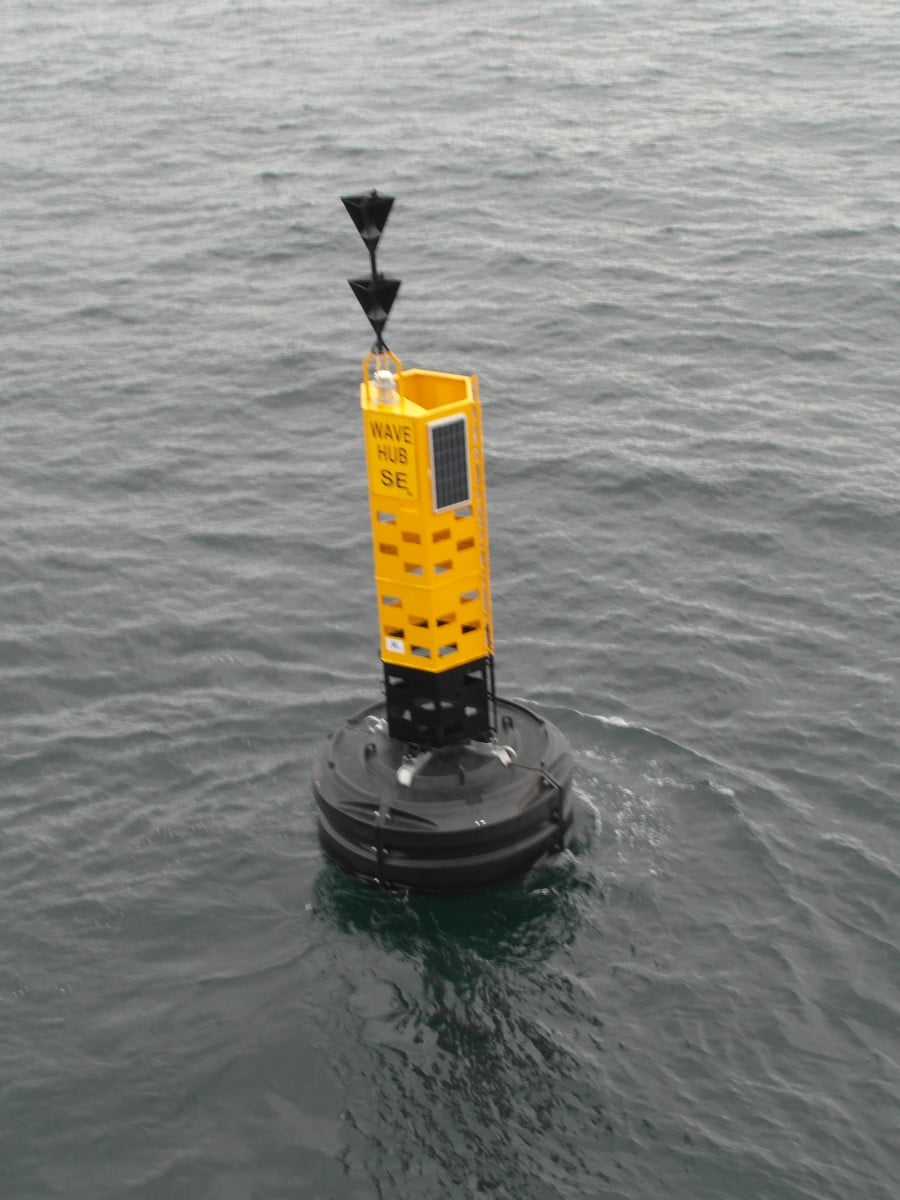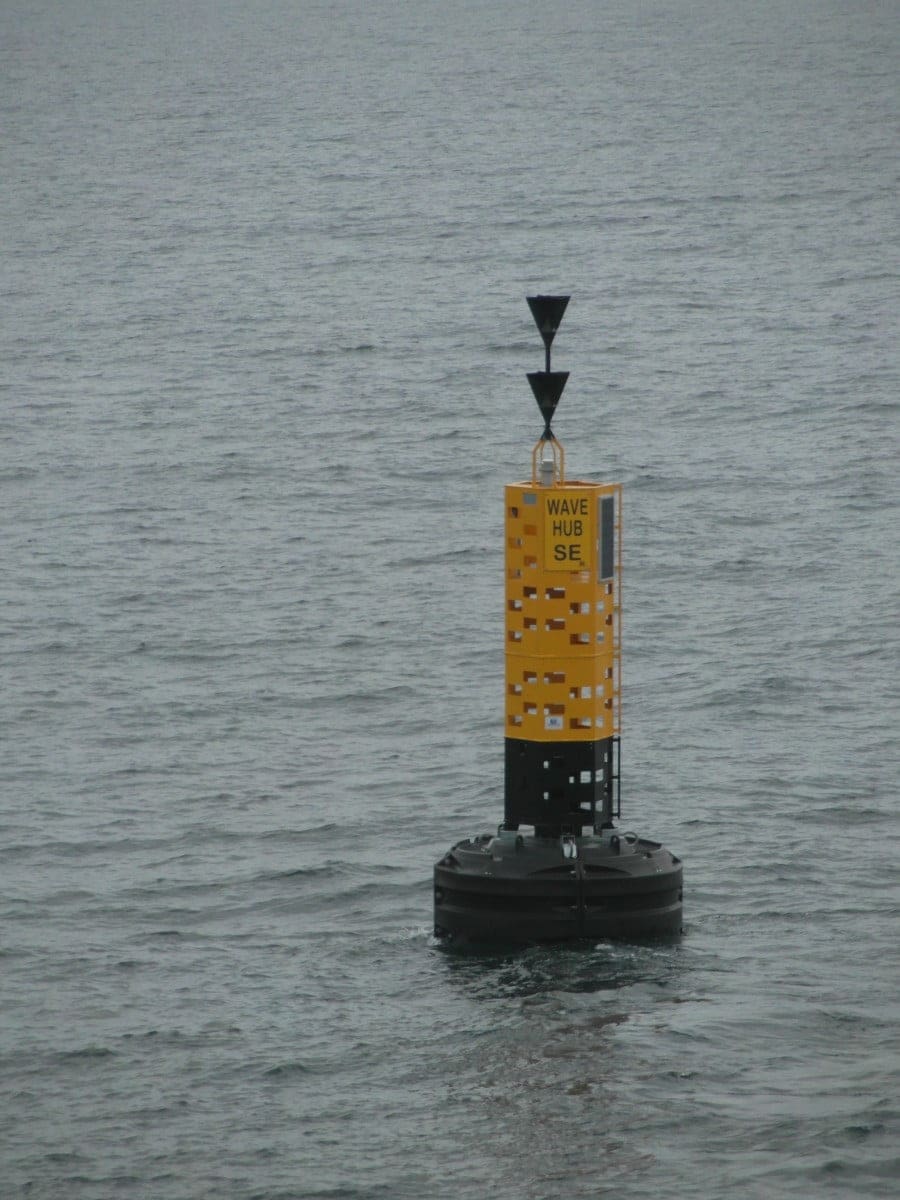Cornwall’s renewable energy project, Wave Hub, is located ten miles off the North coast of the county in the eastern extremes of the Atlantic Ocean and attracts some of the worst of the UK’s weather. (3rd November 2014)
Covering an area of three square miles of sea split into four berths, Wave Hub describes the conditions as an ‘excellent wave climate’.
As such when new long lasting and reliable buoys and moorings were needed, Aids to Navigation company Hydrosphere was chosen to supply two Mobilis JET 9000QL buoys with an order to replace more of the buoys in the future.
“We’ve replaced two steel buoys and their lights which have only been in position for a couple of years and haven’t performed as hoped,”explained Hydrosphere MD, John Caskey.
“Wave Hub needed buoys and moorings which would meet 100-year weather conditions with up to 25m waves and water depths ranging from 50m to 70m and the Mobilis buoys were chosen as the most suitable. The site faces the prevailing westerly Atlantic swell and the typical range is between 15 to 25 kilowatts per metre of wave face which can increase to 35 to 40kw/m around the Isles of Scilly so the buoys and moorings need to be able to cope with these conditions.”
The buoys – a North Cardinal and a South Cardinal – will protect Wave Hub from the potential navigational hazards caused by shipping.
Constructed around a galvanised steel central structure, the buoys use medium density polyethylene hull floats, with marine grade aluminium tower and topmark assemblies. They are built as an alternative to General Lighthouse Authority Class 1 or 2 steel buoys and as such have longer maintenance intervals and are lighter and easier to handle.
“These are some of the largest buoys we’ve ever sold,” explained Mr Caskey. “The North cardinal is also fitted with AIS so ships can easily see it on their Electronic Chart Display and Information Systems (ECDIS). There are another six special mark buoys around the site and we are in the process of replacing the GPS synchronised self-contained solar lights, topmarks and topmark supports.”
The two new buoys together with two Vega VLB-36 lights, each with a range of six miles, were deployed by Trinity House .which has a maintenance contract for the site.
The lights and AIS will be powered by a pair of 55w solar panels on the buoys.
The JET 9000 has a 3m diameter hull providing up to 9000Kg of buoyancy and is the second largest buoy in the JET series, suitable for use in offshore and deepwater locations where a highly visible navigation buoy is required.
It is available with intermediate tailtube (QI) and long tailtube (QL) options providing a high focal plane of up to six metres.
The buoys’ modular design allows for commonality of parts, reducing maintenance, inspection, replacement and spares holding costs.










